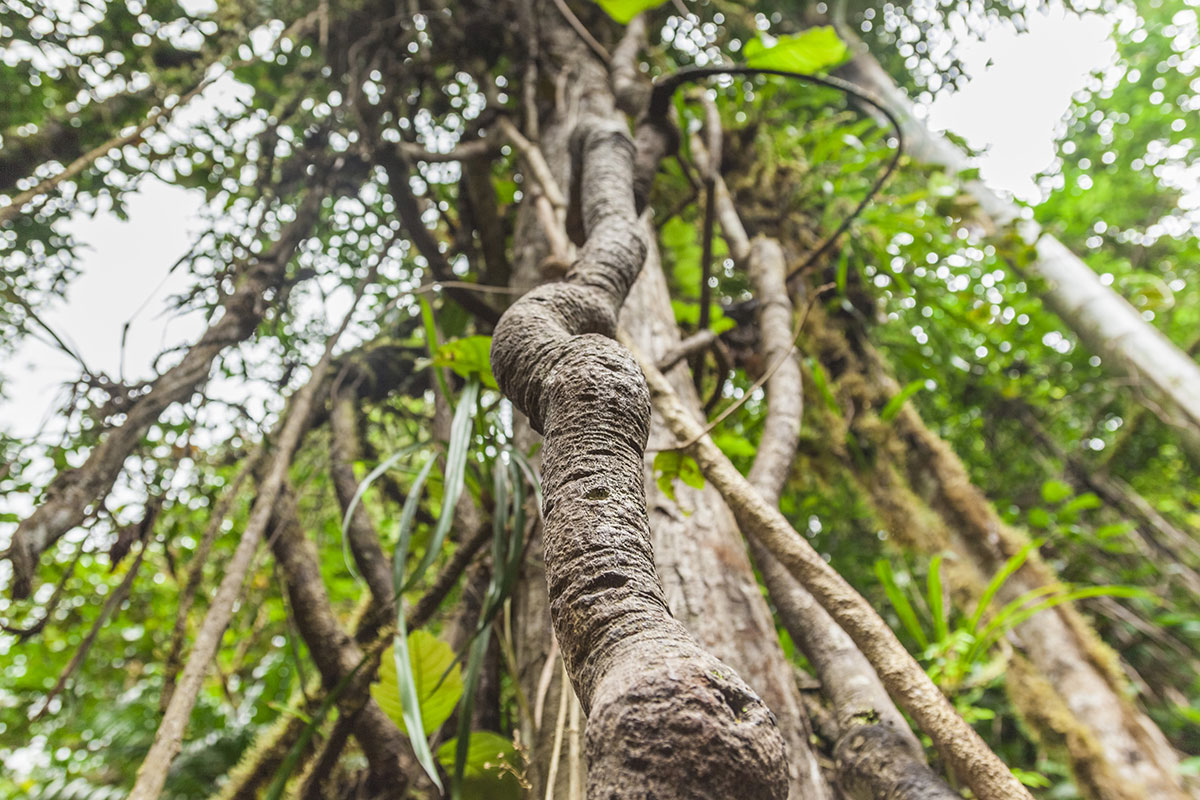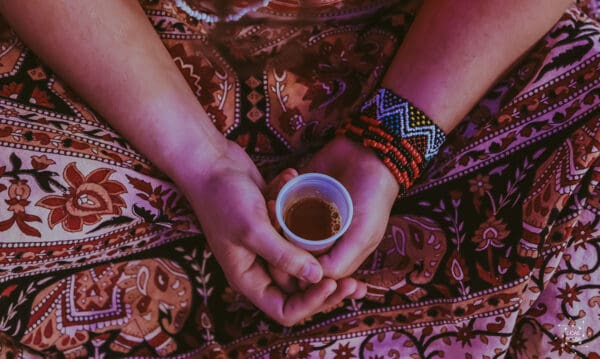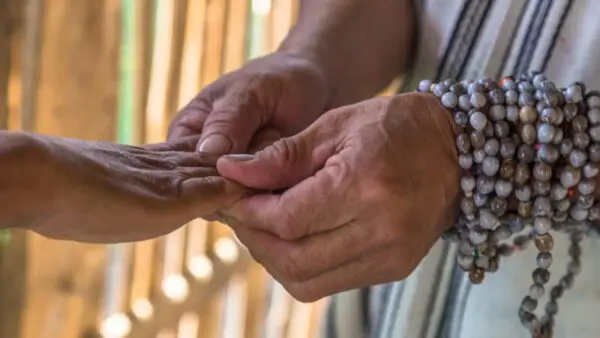Ayahuasca, a ceremonial brew with psychoactive properties, has risen to popularity across the globe. Clinical research indicates that ayahuasca may help address a myriad of ailments that are resistant to modern conventional treatment, such as depression and anxiety, PTSD, and addiction. Ayahuasca may be growing in popularity because people are looking for connection in response to the spiritual void in the modern, widely colonized world.
The brew commonly consists of two plants: the DMT-containing leaves of Psychotria viridis, and the Banisteriopsis caapi vine. The vine contains monoamine oxidase inhibitors (MAOI), a compound which makes the DMT orally available. When consumed as a decoction, these plants typically bring about vivid visions, intense spiritual experiences, and physical, mental, perceptual, and emotional shifts.
Although the Amazon is the original home of ayahuasca, ceremonies are widespread in many other countries, especially North America and Europe. However, the ayahuasca vine cannot thrive outdoors in those regions, so it is often exported from the Amazon.
Global demand for ayahuasca has dramatically increased in the last decade. As deforestation, cattle ranching, and extractive industries such as mining and logging threaten the biodiversity of the Amazon, one might think that the ayahuasca vine would also be threatened. Reports from harvesters indicate that wild growing ayahuasca is more and more difficult to find, especially in regions where ayahuasca tourism is prevalent, such as Iquitos and Pucallpa, Peru. Will the ever-growing global demand for ayahuasca threaten the sustainability of this plant?
Concerns about ayahuasca overharvesting
Peru is regarded as the global epicenter of ayahuasca growth and export, as well as ayahuasca retreats. Nearly five million people visited Peru in 2018, and while it’s difficult to estimate how many of those attended ayahuasca ceremonies, the number is likely in the tens of thousands annually.
Retreat centers and ayahuasca churches across the globe drive up the demand for banisteriopsis caapi. The vine is sometimes exported in a dried form or as a dehydrated resin. It has even become popular for microdosing, that is, taking sub-perceptual amounts on a regular basis. Anecdotal reports indicate that microdosing ayahuasca may help some people with depression.
Ecologically speaking, the vine requires five years to reach a maturity at which it can be harvested and used to make ayahuasca. In some areas, the vine is harvested in such great quantities that it is no longer likely to be found growing wild.
Carlos Suárez Álvarez, Spanish journalist and ethnographer, says that ayahuasca has been depleted in the “humanized forest,” the area where locals source their food and firewood. Increased demands for ayahuasca and other resources depletes these areas of forest, negatively impacting the people who live there. Harvesters are forced to go deeper and deeper into the jungle, including into unknown areas. At a certain point, the increased effort and less guarantee of return becomes not worth the investment.
Many suppliers of ayahuasca have begun sourcing the vine from the Imiría Conservation Reserve outside of Pucallpa, Peru. Although ayahuasca grows more abundantly there, sources say that the effects of increased harvesting are easily noticeable. Improper harvesting practices, such as not leaving enough vine behind for it to regenerate, further threatens the sustainability of ayahuasca in this area.
As what used to be an abundance of wild ayahuasca dwindles in certain parts of Peru, some people advocate for cultivation of the plant on farms and plantations. Ayahuasca is already being grown in tropical places such as Hawaii, Costa Rica, and Panama, where it thrives.
Could Cultivation Be the Answer to the Ayahuasca Sustainability Crisis?
One benefit to cultivating the ayahuasca vine is that it requires little to no maintenance. And, it sells for a higher profit than most staple foods such as bananas and yucca, so there is incentive for farmers in Peru to grow the vine.
Industry suppliers can look to Brazil as an example – the Santo Daime church and União do Vegetal consume large amounts of ayahuasca without major sustainability issues because they cultivate it themselves and/or ensure that they have cultivators sufficient to meet their needs.
Poly-cropping or polyculture is an agricultural strategy where two or more species of plants are grown at the same time, mimicking the diversity of natural ecosystems. In contrast, monocropping, the practice of farming of one crop year after year on the same land, does not mimic natural systems and tends to deplete the soil biome. Ultimately, monocropped farms become fragile ecosystems, vulnerable to parasites or disease and dependent on pesticides and fertilizers. If more ayahuasca plantations are to be instituted to meet the growing demand, farmers should consider doing so in an environmentally regenerative way, as the Ayahuasca Ayni project has done at the Temple of the Way of Light.
Conclusion and What You Can Do About It
Although wild ayahuasca is far more scarce and hard to access in the Ucayali and Loreto provinces of Peru, it is not currently considered endangered. Outside of Peru, in places such as Ecuador, Colombia, and Costa Rica that offer ayahuasca retreats, the demand for the vine does not seem to produce a shortage.
If proper steps toward sustainability are taken, the Amazon will not run out of ayahuasca vine.
Because ayahuasca tourism affects the socio-economic conditions for locals, it is important to be mindful of reciprocity if you go to South or Central America to drink ayahuasca. Although the increased foot traffic brings capital to these places, the expansion of industries to serve privileged foreigners can deepen disparities in local communities.
Inquire about the source of the medicine that you expect to partake of and find out if it was sustainably grown or harvested. Supporting organizations that harvest ayahuasca appropriately should decrease the prevalence of overharvesting in the industry.
Look for ayahuasca retreats and organizations that engage in meaningful reciprocity. You can also consider donating money to any of these organizations.








